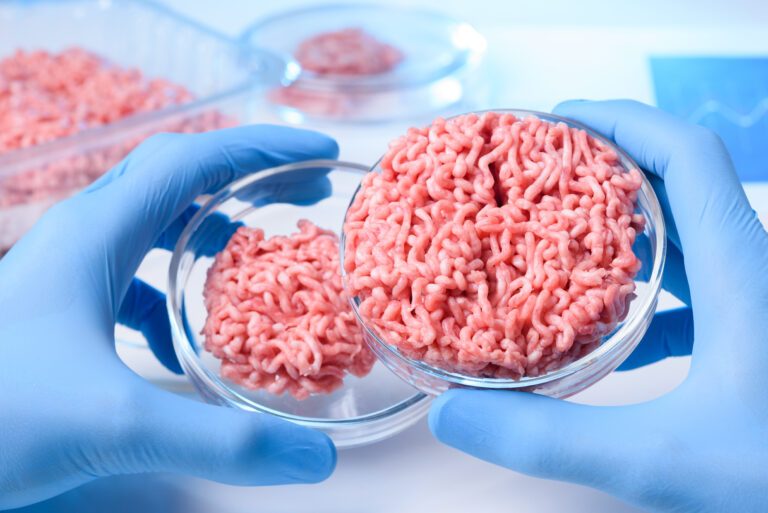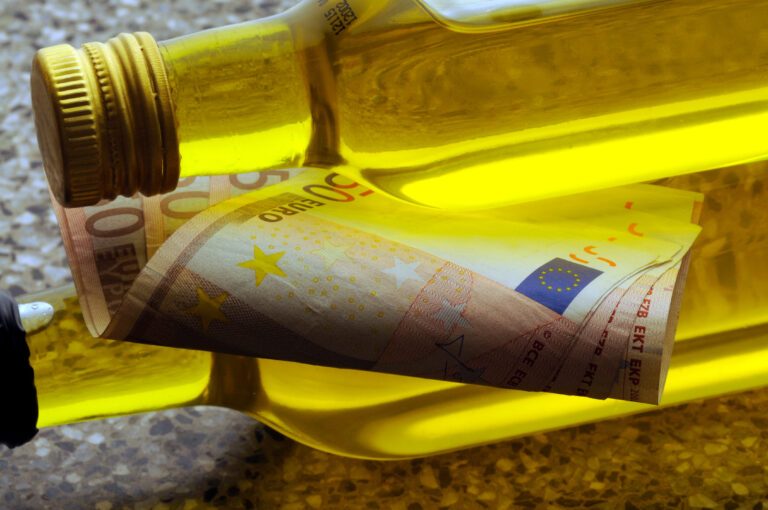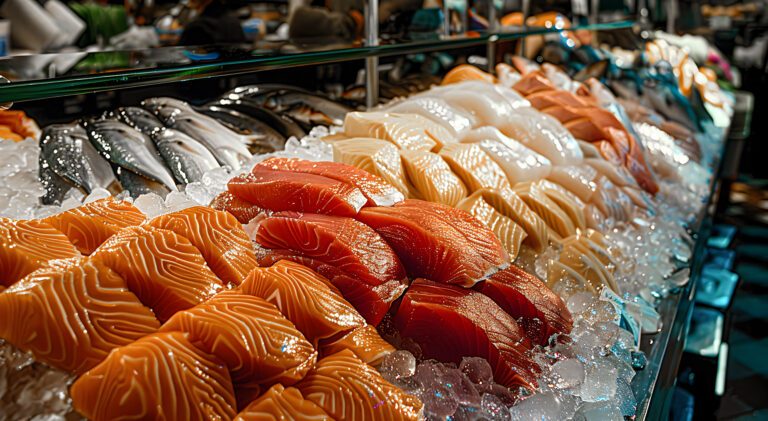Food Fraud: A Global Issue
Ernest Clark
WHAT HAPPENS WHEN THE THINGS YOU AND your family eat and drink aren’t what they’re supposed to be? This pervasive issue threatens the global food supply chain and those of us who rely on it. Food fraud, a term describing the intentional deception of consumers by those in the food industry, is the illicit modification or substitution of edible substances that can result in monetary gains, reduced trust in institutions, and, most importantly, impacts on our health.
“Food fraud can take many forms, including false labeling or branding and adulterated or swapped ingredients.”
The practice is almost always financially motivated; for instance, malicious suppliers can sell diluted products, making more money. The problem is widespread, with approximately one percent of the world’s entire food industry impacted yearly, according to the United States Food and Drug Administration (FDA). Conservative estimates place the global impact of food fraud at 10 to 15 billion dollars each year, though the FDA website states the true figure may be closer to $40 billion.
Food fraud’s biggest threat is to the health of consumers. In 2008, food suppliers diluted infant formula using a dangerous substance known as melamine, a type of plastic. This resulted in the deaths of six infants and the hospitalizations of thousands, becoming known as the “Chinese milk scandal.” But food fraud isn’t a threat consigned to previous decades—on February 6, 2024, the FDA announced that a cinnamon processor in Ecuador was to blame for lead contamination of children’s applesauce distributed beyond the country. Manufacturers recalled the tainted applesauce, but at least ninety confirmed cases of lead poisoning occurred across more than thirty U.S. states, impacting one-year-old children on average. Arianna Johnson made note of this in an article for Forbes, detailing how a Maryland couple filed a lawsuit in November 2023 after their child suffered lead poisoning as a result of the contaminated cinnamon.

A deeper look at the factors that contribute to food fraud helps us understand how and why the practice occurs and continues. As mentioned, food fraud can take a number of forms, but it is ultimately a tool or shortcut to make money. Food fraud, at its most straightforward, can be as simple as sellers claiming a normally lower-priced fish cut is actually that of a more expensive species, driving increased profits. Fraudsters may also sell expired or unmarked products. But fraud can also be the combination of a failure to spend the proper time and resources ensuring food processors are cleaned (or that food samples haven’t been contaminated during packaging) while making illegitimate claims that such safeguards are, in fact, in place. Fraudsters may also falsely state their products are certified organic, exploiting consumer preferences to charge more or achieve more frequent sales.
These practices are effective for several reasons, the chief of which is that it is incredibly difficult to detect food fraud. But why? Even cases of outright food substitution require spot testing to be successfully identified, while the testing itself costs time and resources. In addition, tests may only check for one contaminant, such as plastic. In 2013, beef samples in the United Kingdom and Ireland were found to contain (or, in some cases, be mostly made of) undeclared horse meat. Investigators discovered the substitution after conducting tests for horse DNA, sparking a more widespread investigation. It was only when the Food Safety Authority of Ireland received the results of several tests involving tainted beef that retailers could be alerted, resulting in a mass removal of beef from circulation.

“Globalization also contributes to the difficulty in curbing food fraud. Food and ingredient supply chains can reach across continents, changing hands and being processed and stored at a series of locations.”
This muddies the food trail. Even if a substituted or misbranded food item is successfully identified, it can be a complicated, time-consuming process to track down the source of the fraudulent product.
Consequences for perpetrators vary. Business owners who sell tainted products can receive fines, revocations of their licenses, or even jail time. However, halting fraudsters at the source requires more in-depth efforts. Operation Opson is a yearly Interpol and Europol joint law enforcement operation targeting food fraud. The eighth annual instance of this resulted in the seizure of approximately 16,000 tons and 33 million liters of compromised food and drink items, as well as the arrest of hundreds of individuals. In its eleventh year, Operation Opson disrupted eight different criminal networks.
In another example, in November 2023, Italian and Spanish police seized 260,000 liters of consumer-grade olive oil adulterated with lower-grade oil alternatives. Police also uncovered a criminal network that distributed the oil, confiscating multiple vehicles and €91,000 in cash. In relation to the case, the Food and Economic Safety Authority of Portugal stated a scarcity of olive oil on the global market and subsequent increase in olive oil prices likely contributed to the criminal activity, showcasing how changing economic factors can spur financially motivated fraudsters.

What types of foods are most at risk for fraud, and how can we protect ourselves?
“The Food Authenticity Network listed in 2022 the most common product categories, naming seafood as the number one most likely food to be adulterated or substituted.”
Meat, poultry, and dairy were close behind, each accounting for approximately a tenth of observed cases that year. Other likely foods that fraudsters target are items like honey or oils, which can be easily mixed with lower-quality substitutes.

While law enforcement agencies regularly identify and disrupt fraudster operations, we as consumers must also take steps to reduce the risk and likelihood of potential food fraud impact. The Food Fraud Initiative at Michigan State University recommends consumers ask themselves questions when something doesn’t seem right: does the food taste how it’s supposed to? Does it have the wrong color? If you have consumed a certain fish before, and something tastes strange about a recent cut, there may be a legitimate reason.
In addition, prioritizing certain types of suppliers over others can reduce the risk of food fraud. A national grocery store chain will be less likely to sell fraudulent or unsafe goods than an alternative local provider. Seals of quality or approval from trusted brands are not just a marketing tactic; they are also generally less likely to involve adulterated or substituted products or ingredients.
More sophisticated techniques to detect and prevent food fraud may be on the horizon. While spot-testing solutions are time-consuming and expensive, experts believe this may change. In Cara Rosenbloom’s 2017 Washington Post article, Food Fraud Initiative Director John Spink said, “DNA coding is too expensive for consumers to do now, but it may eventually be an option.” Currently, a simple awareness of food fraud’s prevalence can help us be more careful about what we and our loved ones ingest, avoiding food and drink that tastes wrong and prioritizing less risky brands and products.
Ernest Clark is a researcher based in Dallas, Texas, who enjoys rock climbing, reading, and the outdoors. In his off time, he writes fiction short stories and attempts to broaden both his cuisine and media palettes wherever possible.